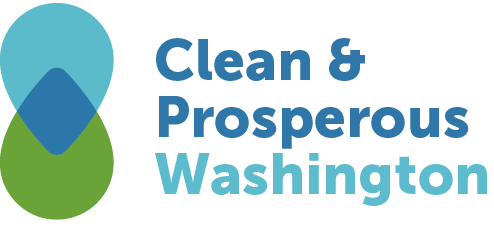How can we accelerate transportation decarbonization?
With nearly half of our state’s greenhouse gas emissions coming from the transportation sector, we see lots of opportunity for decarbonization progress at our ports, on our roads and in the air. And we’re encouraged by the progress we see to the South, as we learn from California’s work on transportation decarbonization.
One of the more exciting components of the California climate action plan is HVIP: the Hybrid and Zero-Emission Truck and Bus Voucher Incentive Project. With state-funded incentives, California helps the private sector to speed commercialization and clean the air in communities that need it most.
 Last month California approved their 2022 HVIP budget, and announced changes to the program that funds such projects as: zero-emission drayage truck incentives, a rural school bus pilot project, incentives for small trucking fleets and independent owner operators, Clean Cars 4 All (a program that uses incentives to help lower-income consumers living in and near disadvantaged communities replace their old higher-polluting vehicles with newer and cleaner transportation), and many others.
Last month California approved their 2022 HVIP budget, and announced changes to the program that funds such projects as: zero-emission drayage truck incentives, a rural school bus pilot project, incentives for small trucking fleets and independent owner operators, Clean Cars 4 All (a program that uses incentives to help lower-income consumers living in and near disadvantaged communities replace their old higher-polluting vehicles with newer and cleaner transportation), and many others.
Closer to home, Washington can implement these types of programs with Cap-and-Invest revenues. We have identified several high-potential opportunities for decarbonizing transportation in Washington state, and will publish a detailed Low Carbon Prosperity Institute analysis of projected costs and benefits later this month.
Meanwhile, we celebrate the Washington State Department of Ecology implementing California clean vehicle rules that combine control of smog-causing (criteria) pollutants and greenhouse gas (GHG) emissions into a coordinated package of regulations:
“Washington is expanding its program by adopting California’s more protective vehicle emission standards for new vehicles – starting with model year 2025 and later – sold in Washington. Motor vehicles are the largest source of air pollution in Washington. Transportation contributes about 22 percent of total air pollution and 45 percent of greenhouse gas emissions throughout the state.”
As reported in the Portland Business Journal:
The West Coast is now committed to cleaner trucks.
Washington this week joined Oregon in adopting a California rule that requires truck manufacturers to grow the percentage of zero-emissions vehicles they sell in the state.
The Department of Ecology also made Washington the latest state to adopt California’s ZEV mandate for light-duty vehicles, joining 14 other states, including Oregon, already in that program.
Under federal law, California is the only state that can create vehicle emissions standards more stringent than federal law — but other states are allowed to mimic the Golden State regulations.
So far, only the three West Coast states have gone in on the truck rules, although some East Coast states are now considering the rules.As was the case in Oregon, backers in Washington framed the truck rule as vital in addressing diesel pollution that disproportionately affects low-income and communities of color, and in cutting transportation-related greenhouse-gas emissions.
“Black and brown communities in particular, who have been forced to live next to highways and freight depots will breathe easier,” Paula Sardinas, founder of the Washington Build Back Black Alliance, said in a statement. “Our communities have borne the brunt of air pollution for too long. It is past time to address this environmental injustice, and these rules are an important step along the way.”
The ZEV truck sales requirements kick in with the 2025 model year. They ramp up from around 10% of sales that year, depending on truck class, to as high as 75% of sales by 2035. Medium-duty trucks (think delivery vans and school buses) face the steepest climb, with large pickups next and big rigs given the least ambitious targets.

